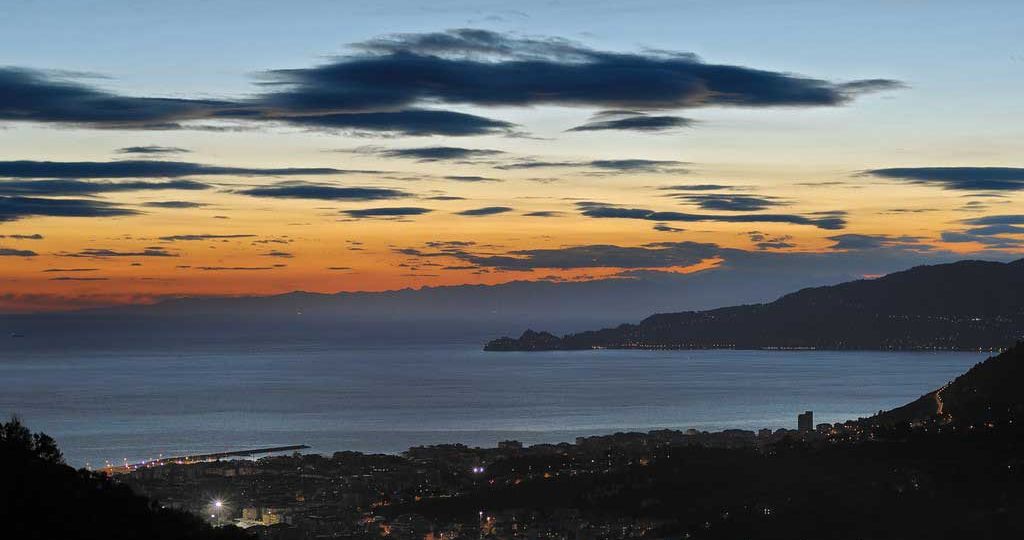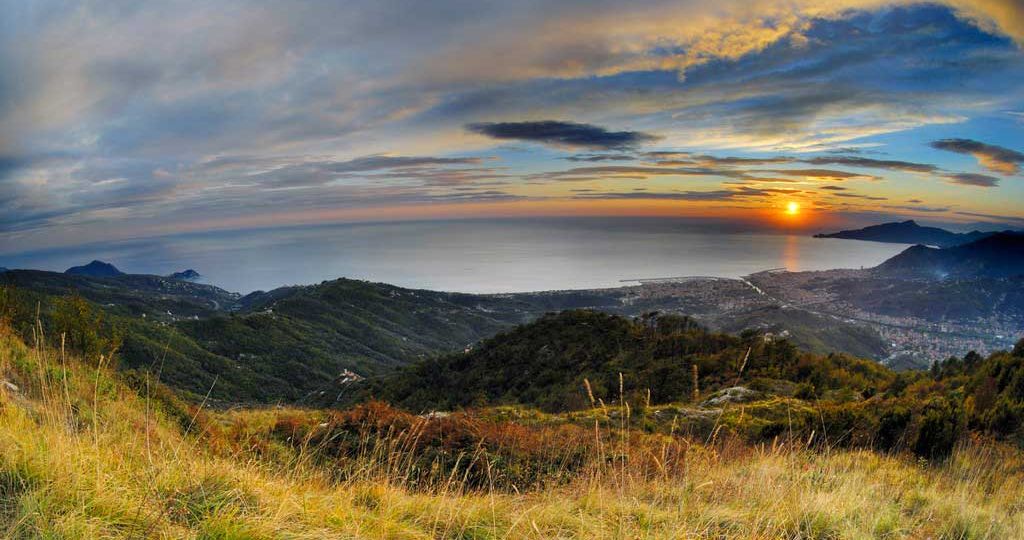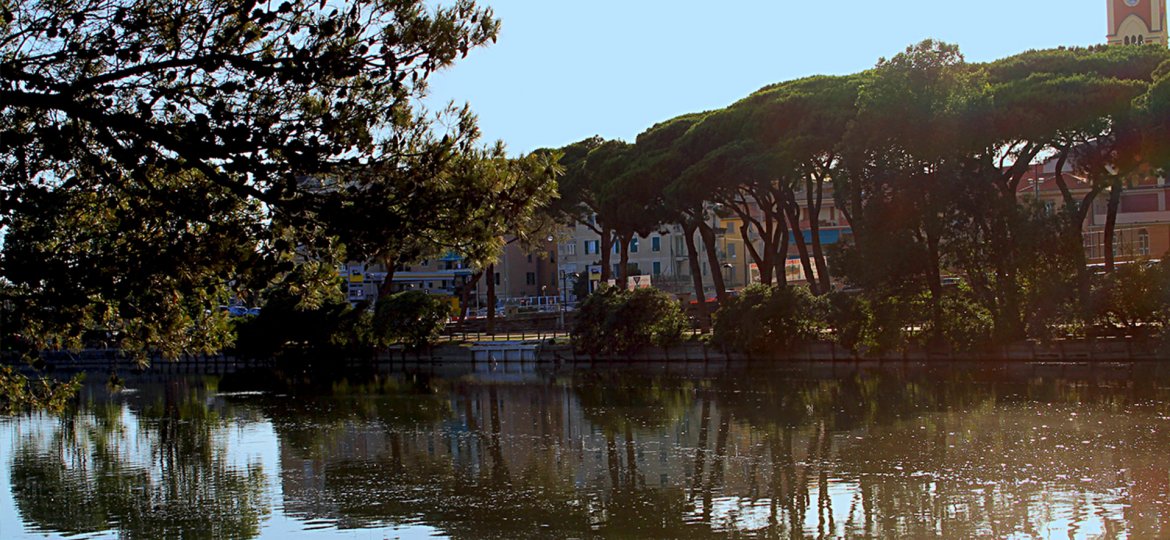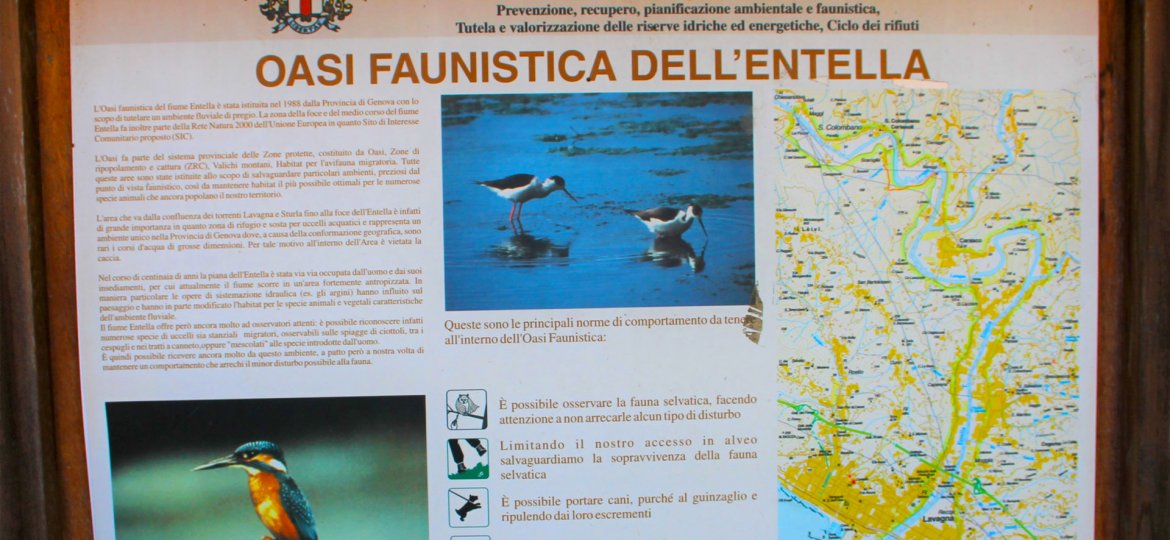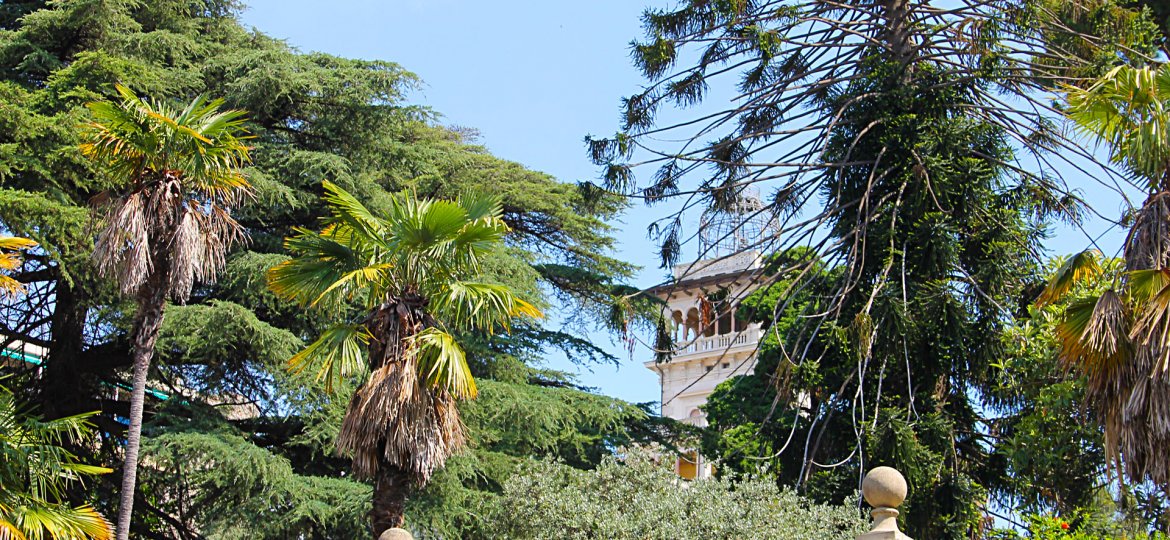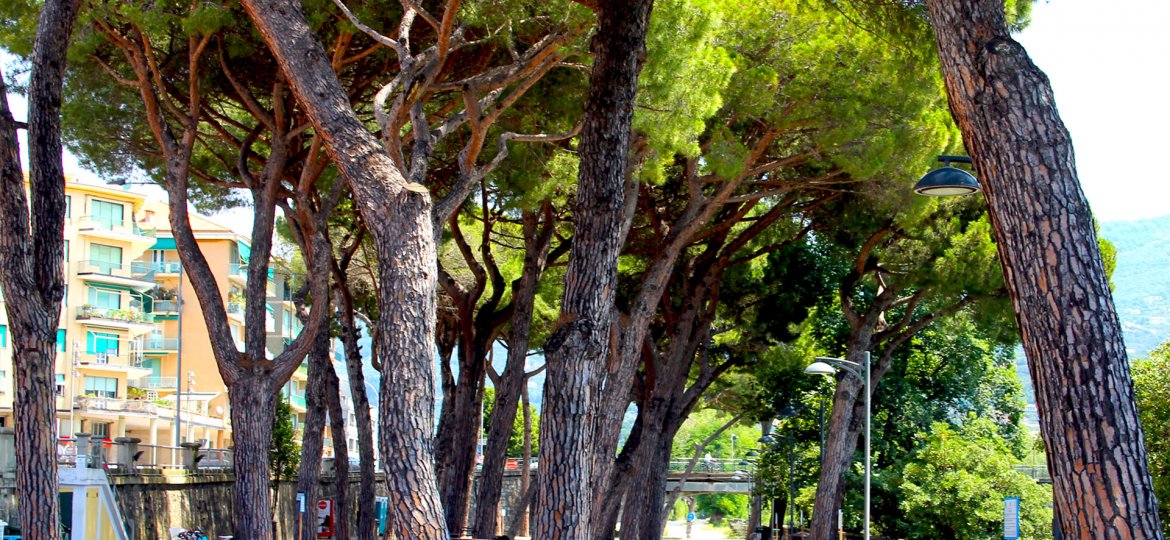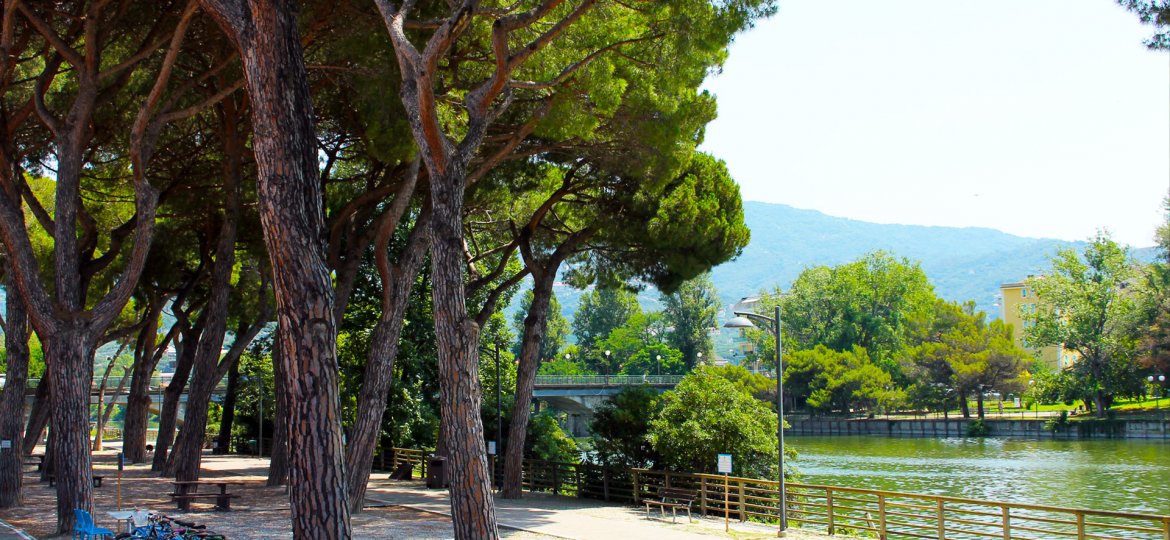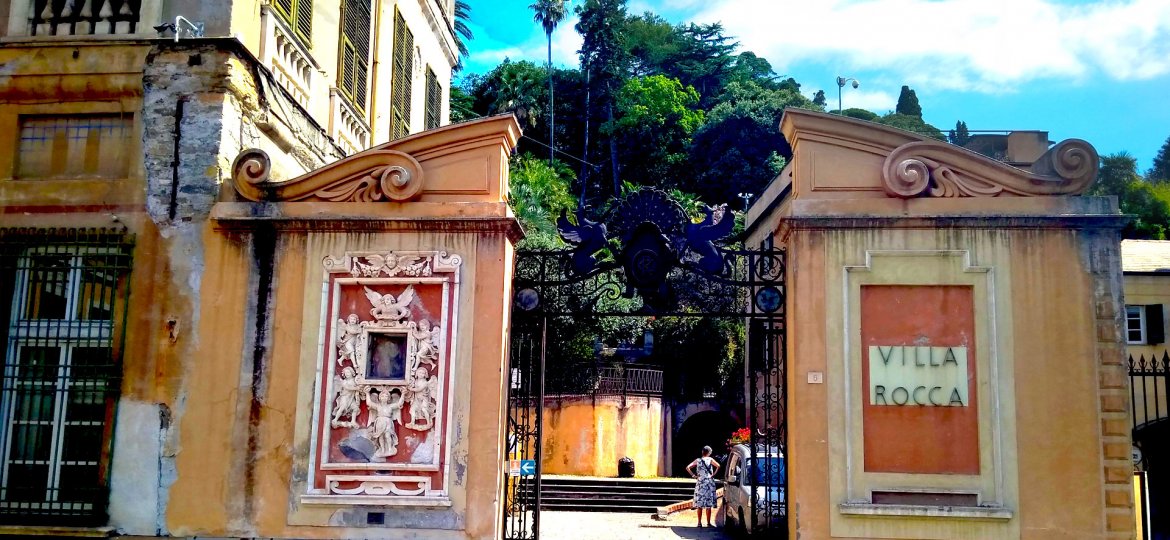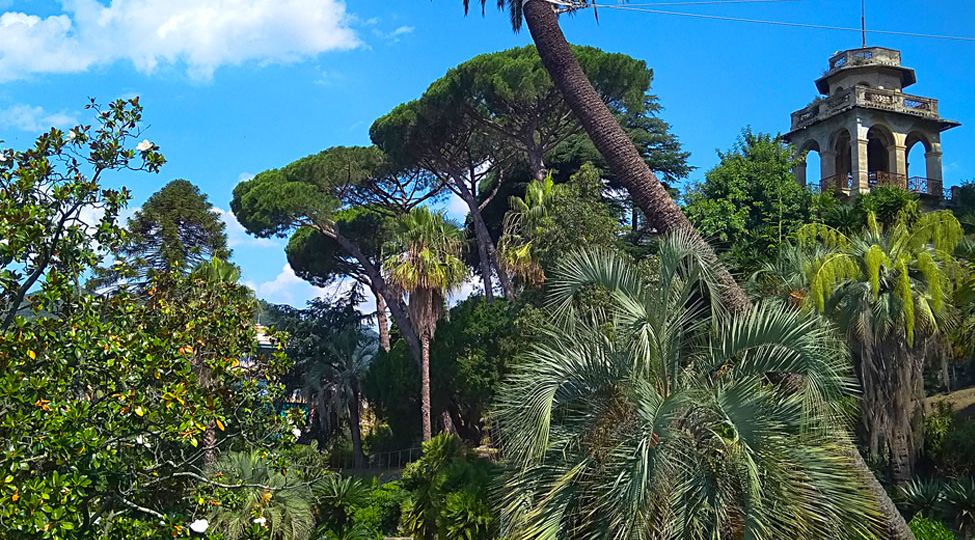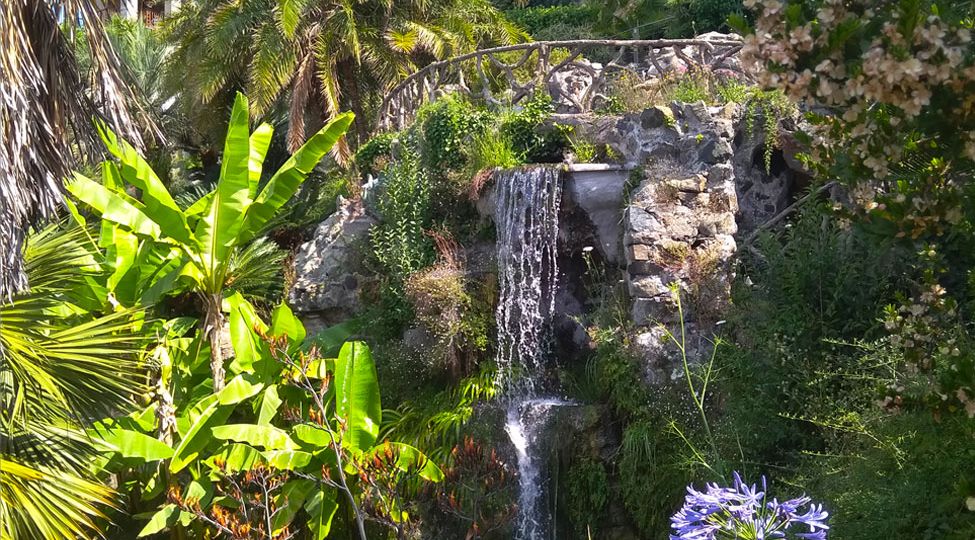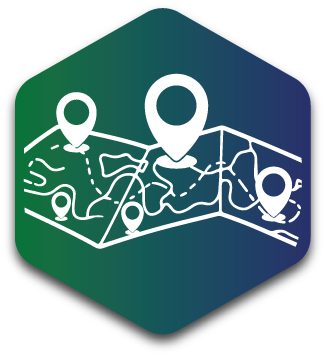Although Chiavari is predominantly urban, there are areas around the town with a moderate to high rate of biodiversity.
Historically, it is one of the most famous centres for the study of Ligurian botany. We should mention the Chiavari botanists Federico Delpino and Bernardino Turio, who were the first to study in depth the nature of the valleys and rivers bordering Chiavari, as well as the anthropised plains of the River Entella, once the site of important wetlands comparable to those around the River Magra today. As a result, Chiavari is included in two Sites of Community Importance, as well as in a Fauna Protection Provincial Oasis.
The site “pSIC Pineta – Lecceta di Chiavari” is the one that most characterises the natural environment in the area. It includes a coastal stretch with holm oak forests (Quercus ilex) and pine forests with maritime pine, domestic pine and Aleppo (Pinus pinaster, Pinus pinea, Pinus halepensis). It contains land belonging to the sedimentary formation of Mount Antola.
The site has numerous endemic species, including the marine molluscs Toffolettia stritiolata and Solatopupa pallida. Among the flora, the species of greatest interest is Euphorbia biumbellata, at the north-eastern edge of its distribution area. There are also numerous orchids protected by international regulations (CITES).
Another important site that only partially involves the Chiavari areas is the “pSIC Mouth and Middle Course of the River Entella”. The Entella originates from the confluence of three streams (Lavagna, Graveglia and Sturla) in Carasco. The springs of the Lavagna stream, which flows between the towns of Lavagna and Chiavari like the River Entella, are located in the area of Siestri, in the Municipality of Neirone, possibly the place mentioned by Dante Alighieri in the verses of the Purgatorio.
The site comprises the River Entella, which is about 5 km long. The geology is characterised by alluvial deposits of gravel and clayey sands. The waters are populated by minnows (Leuciscus souffia) and barbei (Barbus plebejus).
For enthusiasts, the main specimens are listed here: the kingfisher (Alcedo atthis), Tawny Pipit (Anthus campestris), red heron (Ardea purpurea), greater short-toed lark calandrella (Calandrella brachydactyla), little egret (Egretta garzetta), gardener (Emberiza hortulana), knight of Italy (Himantopus himantopus), little bittern (Ixobriychus minutus), Red-Backed Shrike (Lanius collurio), gull (Larus melanocephalus), bluethroat (Luscinia svecica), a rare and beautiful bird of Swedish origin, night heron (Nycticorax nycticorax), as well as fish such as the minnow (Leuciscus souffia) and barbel (Barbus plebejus) and, among the Insects, the moth (Callimorpha quadripunctaria). Among the plant species, you can find the yellow iris (Iris pseudacorus), now very rare, but once common in the swampy areas of the plain.
Routes
Along the River Entella, you can visit the Oasis along an equipped path courtesy of the Province of Genoa, which mostly follows the cycle path that goes from Chiavari to Carasco.
In addition, the botanical garden in the Park of Villa Rocca in Chiavari has been open for several years now. This features the most representative species of the aforementioned areas, relating in particular to the Mediterranean, ruins areas and coastal areas.
Brochure The Wildlife Oasisof the River Entella
At the Chiavarese CAI office, you can find out about a wide range of excursions.




